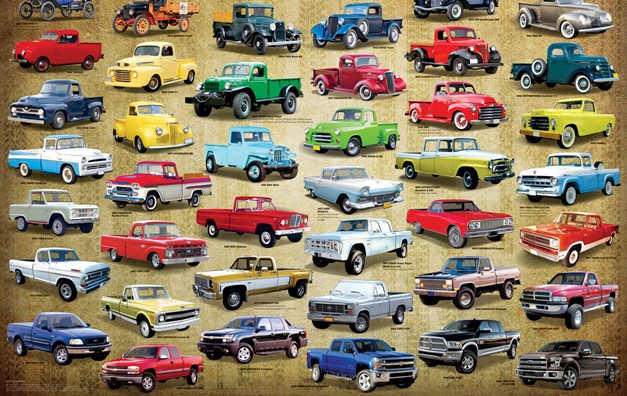Cars have only been around for a little over a century, but RAM trucks have a long history. Their story first began in 1918, four years after the Dodge Brothers first launched their brand, when the first Dodge truck was produced for commercial use. The vehicle was advertised at the time with the slogan “Dodge Brothers’ Business Car.”
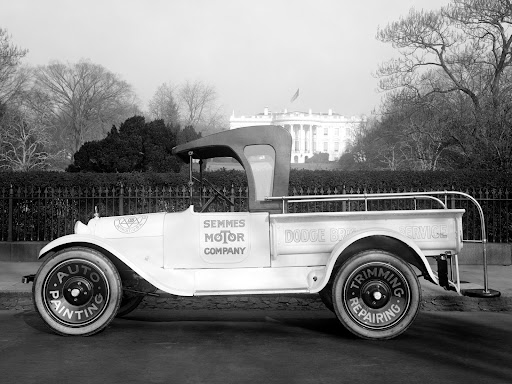
The term car was perhaps confusing, as the model was no longer a cutaway sedan but the first real truck – a larger vehicle that provided additional space for transportation and services. In rural America, Dodge trucks quickly became quick a symbol of durability and quality.
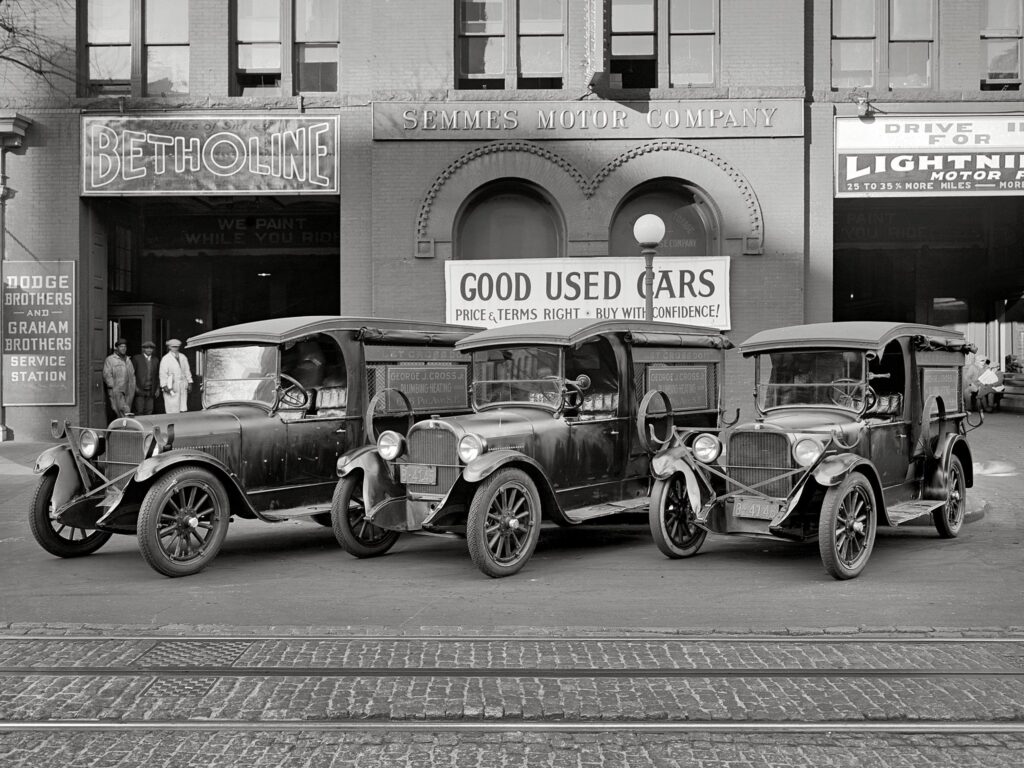
Within the next few years, Dodge acquired Graham Brothers, which built heavier trucks with Dodge engines and transmissions, but in 1925 a banking group bought Dodge Brothers for $146 million. Three years later, Dodge was sold to Walter P. Chrysler’s new company. Dodge introduced the last pickup designed by the Dodge Brothers in 1929.
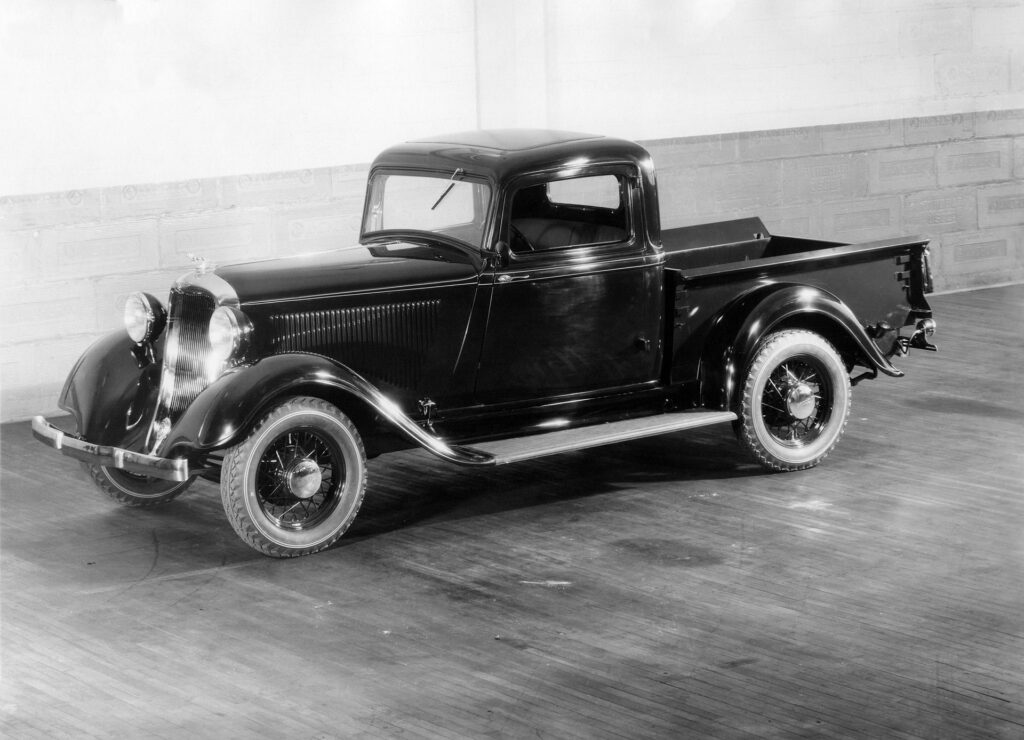
In the 1930s, the new generation of trucks received what would later become the name-giving ram’s head as a hood ornament, which was used until the 1950s. It then disappeared until 1981, when the RAM name was officially reintroduced with the new generation of trucks. Dodge referred to its half-ton truck as the “150,” the three-quarter-ton as the “250” and the one-ton as the “350” – pioneering nomenclature for current pickups.
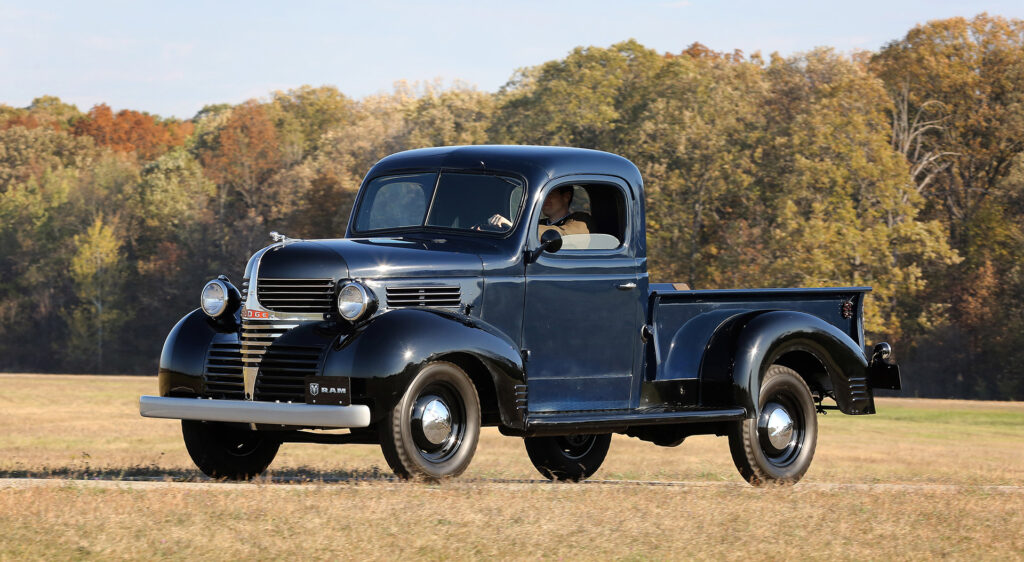
From 1939 to 1947, Dodge focused on building “dependable, job-rated” pickups. World War II necessitated the development of a four-wheel drive military truck, which ran under the WC/WD series designation from 1940. These pickups featured a more streamlined, aerodynamic design, larger brakes, a wider seat, and an improved engine that was slightly smaller but still had 70 horsepower (85 PS by 1941).
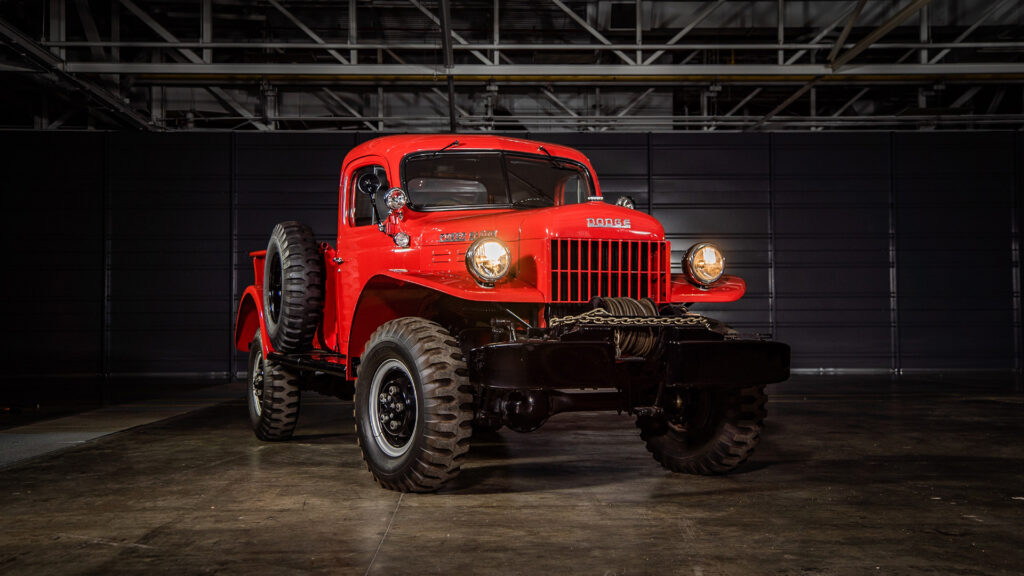
Post-WWII, the Army trucks led to the development of the Power Wagon, which was launched in 1946. The Power Wagon received a civilian (closed) cab on the military chassis and the 230 ci six-cylinder produced about 95 PS and was equipped with a four-speed transmission in 1949. This evolved into the M-37 in 1950.
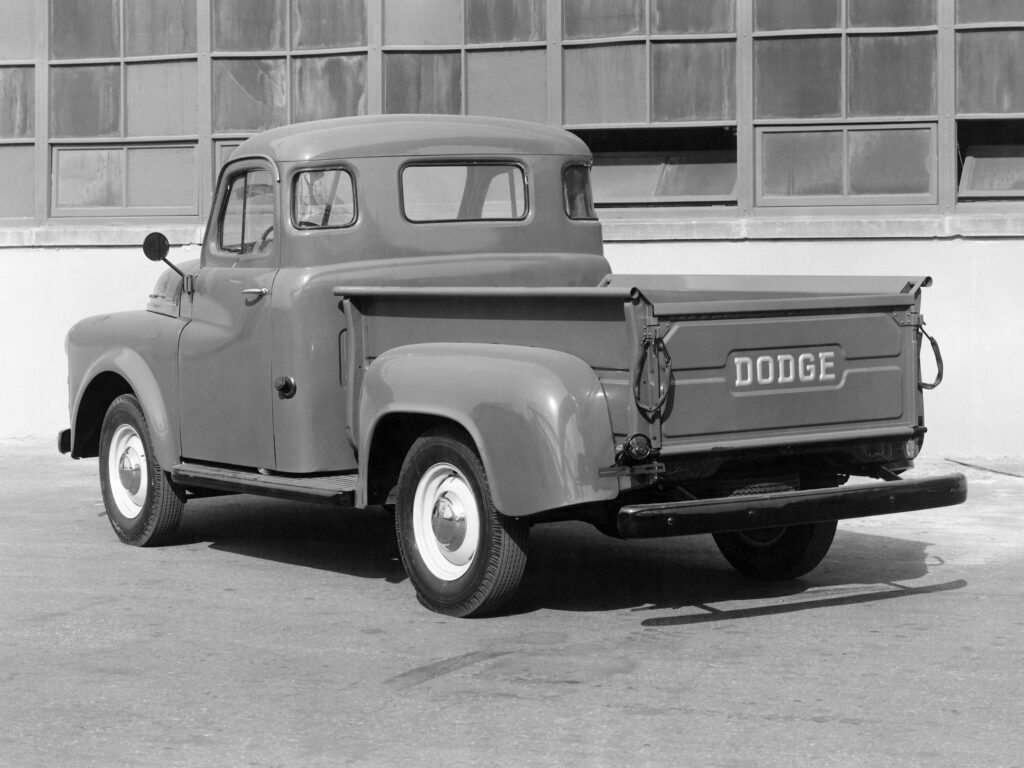
The Pilot House pickups arrived in 1948, and were roomier, more comfortable, and had new options like a factory-installed radio and small side windows. The engines also received some engineering improvements. Starting in 1950, Dodge offered Fluid Drive, a three- or four-speed semi-automatic that required a clutch only to start the engine.
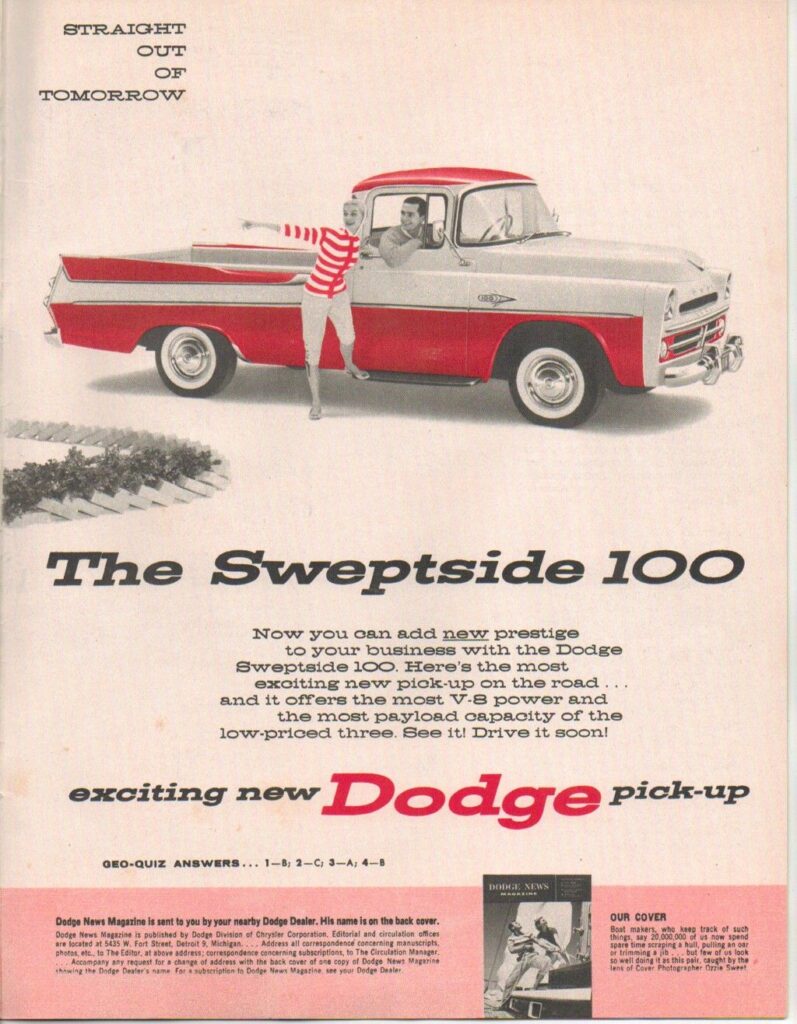
In 1954, Dodge presented a brand-new model with a new chassis, body and engines. This new C-Series pickup was one of the best-looking trucks on the market. Dodge implemented the tail fins of passenger cars into a square truck design, creating one of the greatest design icons of the 1950s. In addition to tail fins, a wraparound panoramic windshield was a distinguishing feature. The most notable change, however, was the introduction of V8 engines, which grew over the years from a 133-horsepower 241 ci- to a 331 ci engine with 172 horsepower. A comfortable two-speed Powerlite transmission replaced the Truck-O-Matic semi-automatic. While pickups were already big among farmers, the C-Series was available not only as a basic work truck but also as an upscale “sweptline” version with two color paint schemes, that appealed to many non-farmers!
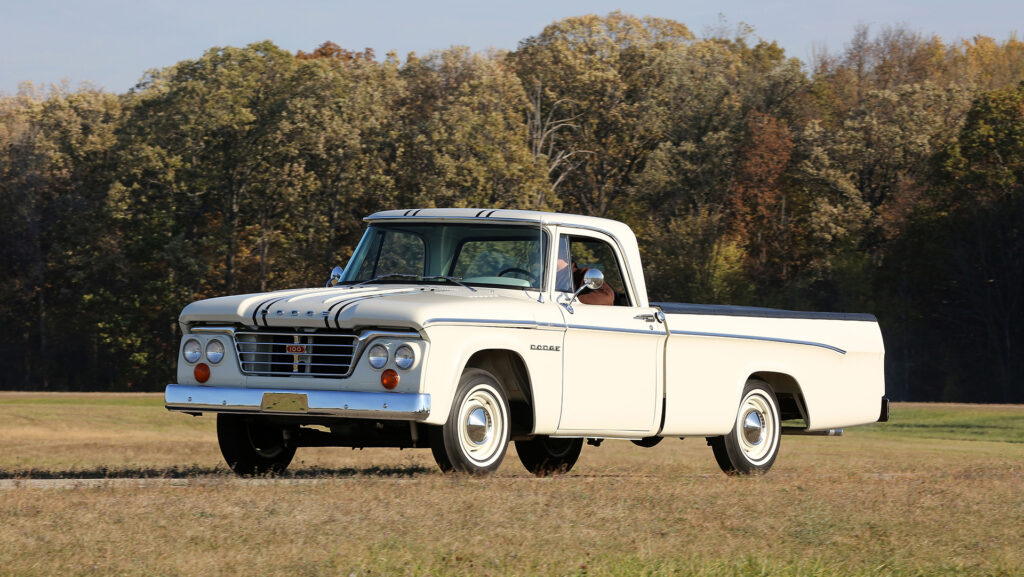
Starting in 1961, Dodge presented the D-Series, which featured three generations until the introduction of the RAM model. The D-Series was a modern and redesigned pickup model with new components, engines, and powertrains. Customers had multiple choices for inline-six and V8 engines and trim levels, as well as for different cargo bed lengths. One interesting option was the Custom Sports Special, which featured the big 426 ci Wedge V8 engine with 365 horsepower and a revised suspension. Today, this is considered to have been the first performance truck.
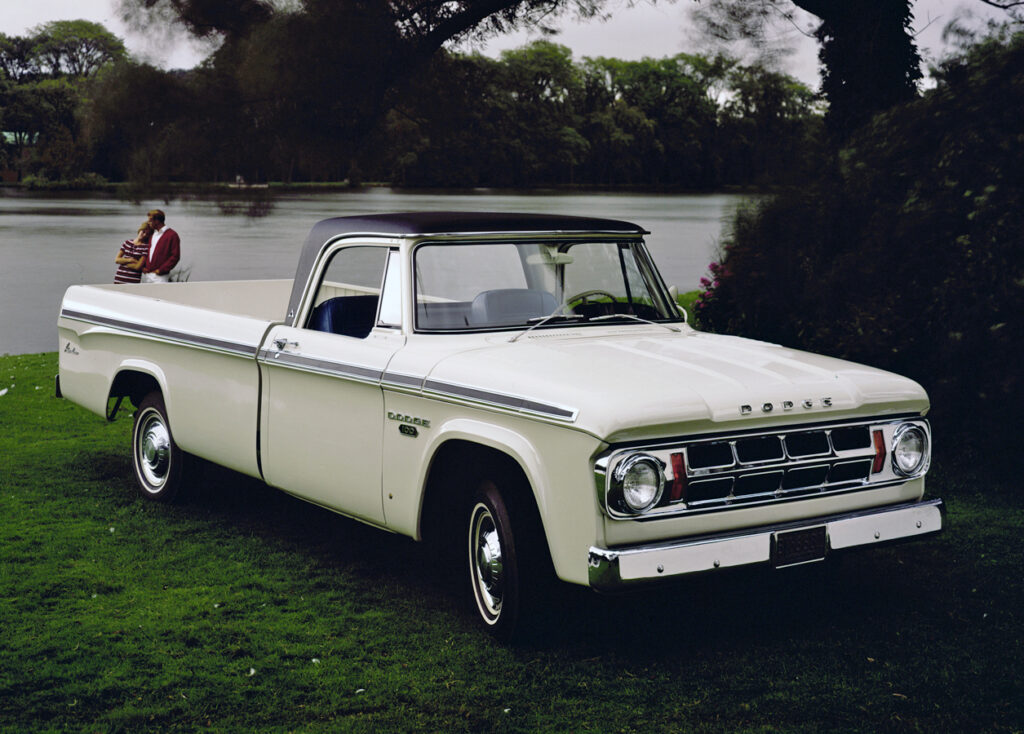
The second generation, starting in 1965, was available as the D100, the full-size pickup, and the D200 and D300, which were larger and more powerful versions for commercial use and construction workers. The models received a new body, six engines and four trim packages to choose from.
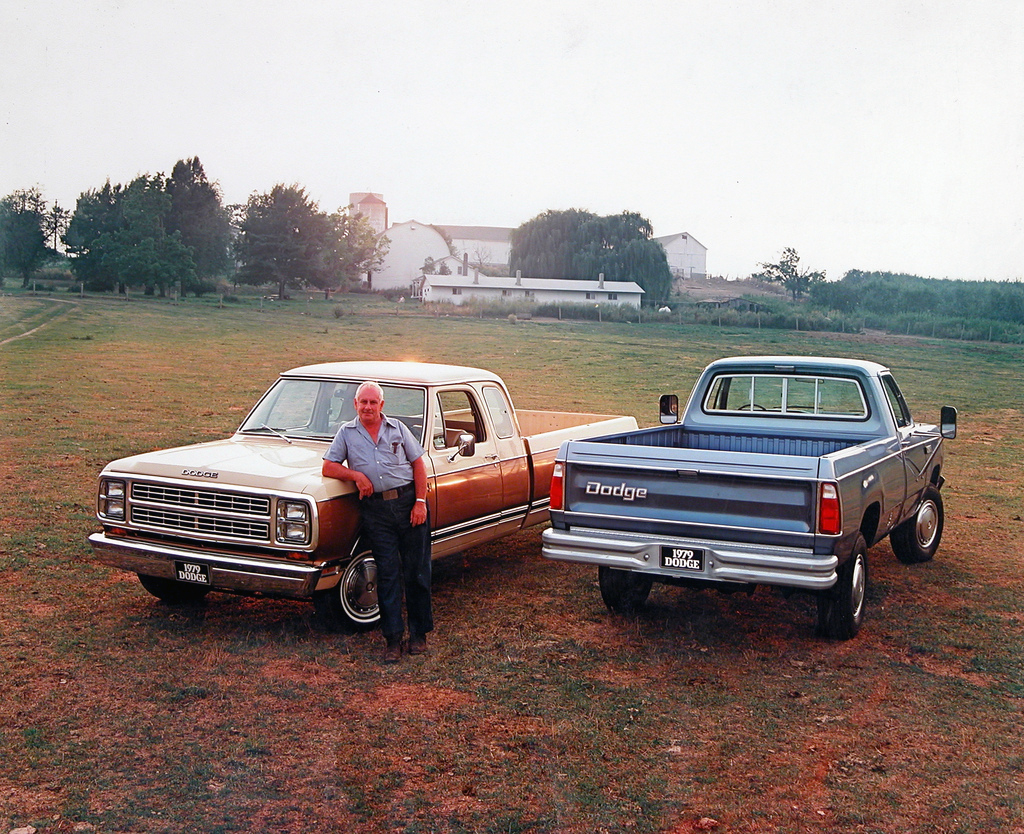
The 3rd generation, starting in 1972, received a new design at the front and rear end, as well as a revised cabin, and an independent front suspension. Eight engines, from the small Slant Six to the large 440 ci V8 were available, as well as a Diesel engine. With all-wheel drive, the Dodge W200 was first popular with the Army and later, because of its ruggedness with fans – even in Europe, where pickups were only available as flatbed trucks („Pritschenwagen“) based on VW Bus or small size pickups based on a VW Golf („Caddy“).
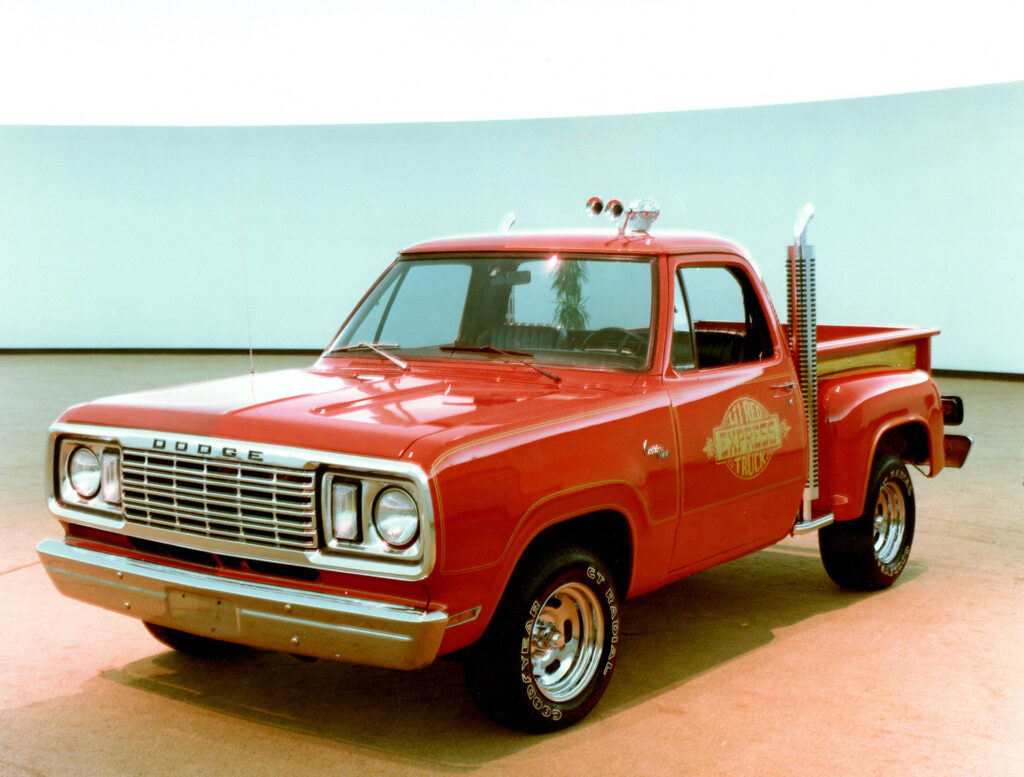
The highlight in 1978 was the “Li’l Red Express” which had a big 440 ci V8 engine with high pipes and wood trim, and is one of the most interesting classic Dodge pickups today. At the time, it was the fastest accelerating vehicle built in America.
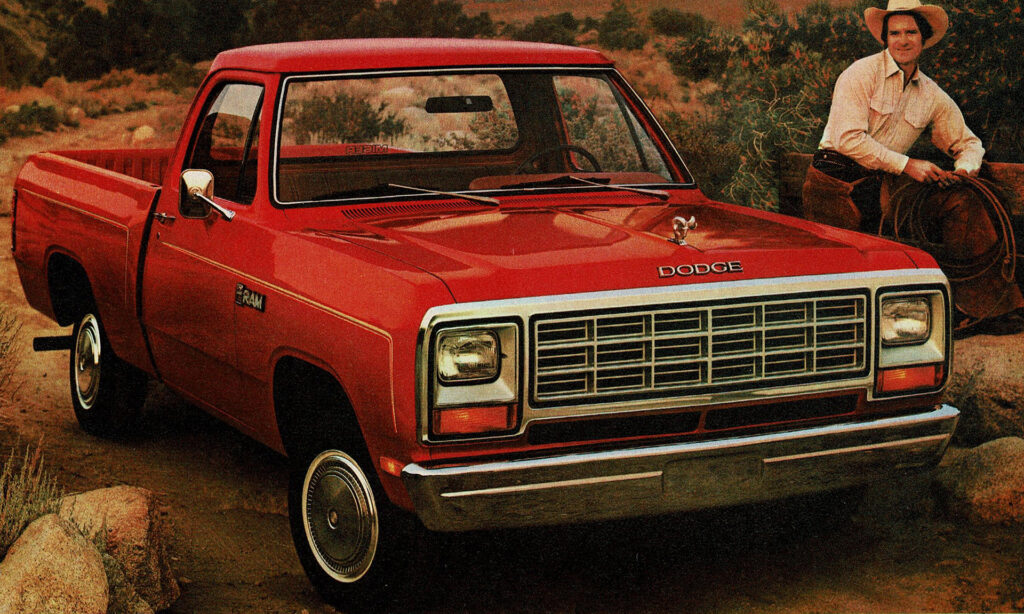
Starting in 1981, the well-known Chrysler CEO Lee Iacocca gave the name RAM to the redesigned Dodge pickup. The base was old, but the improvements in design, mechanics and drivetrain made the Dodge RAM pickup one of the most popular models on the market. In addition to the aged Slant Six engine and several V8s, Dodge offered a Diesel option in the form of the 5.9-liter Cummins engine. A variety of model options were available for the first generation, including “D” for two-wheel drive and “W” or “Power RAM” for four-wheel drive, as well as a handful of cab options (standard, club, extended and crew cab).
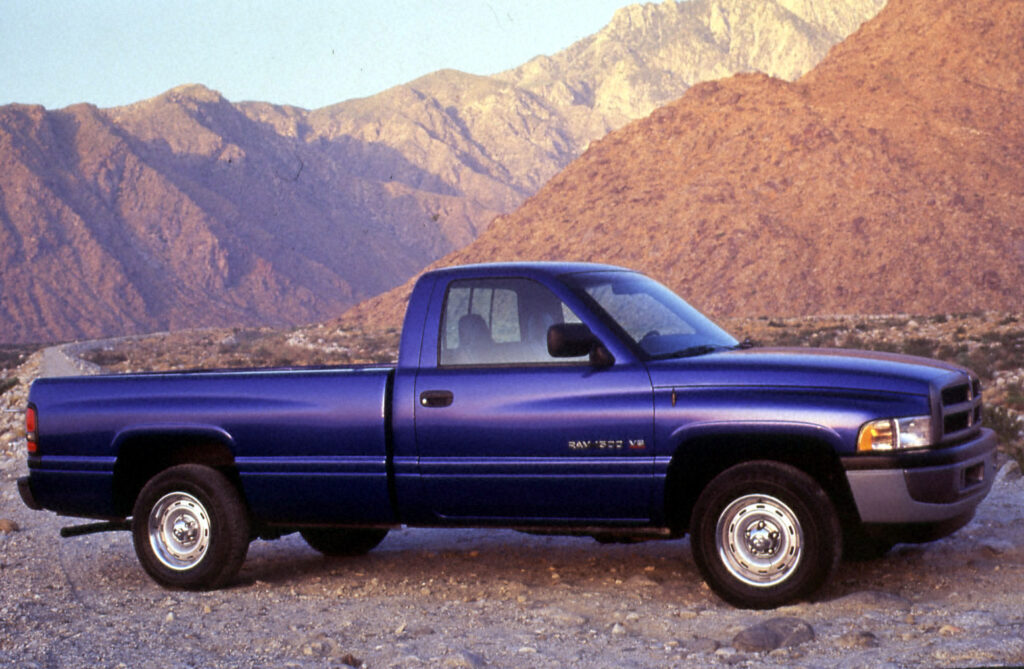
The second generation of the RAM was introduced in 1994. The pickup was built on a completely new platform, with improved components and a larger frame, and had one of the most iconic designs in the auto industry. Legend has it that designers took cues from classic Dodge pickups and carried that over in modern form with separate fenders and a massive grille that bore a “Dodge Cross” like the first WC and post-war models. For the first time in history, the sales figures of a Dodge pickup exceeded those of its closest competitors Ford and Chevrolet! No wonder, because in addition to the basic Work Special, there was also an LT, ST and the luxurious Laramie SLT. The model’s rise to fame was also evident in popular culture, with the RAM starring in many Hollywood movies and TV series at the time, like the popular Walker, Texas Ranger. The engine lineup started with a 3.9-liter V6, with various V8 engines and a Cummins inline-six above that. In 1998, the “Crew Cab” model was launched, which featured rear “suicide doors” for easier rear access.
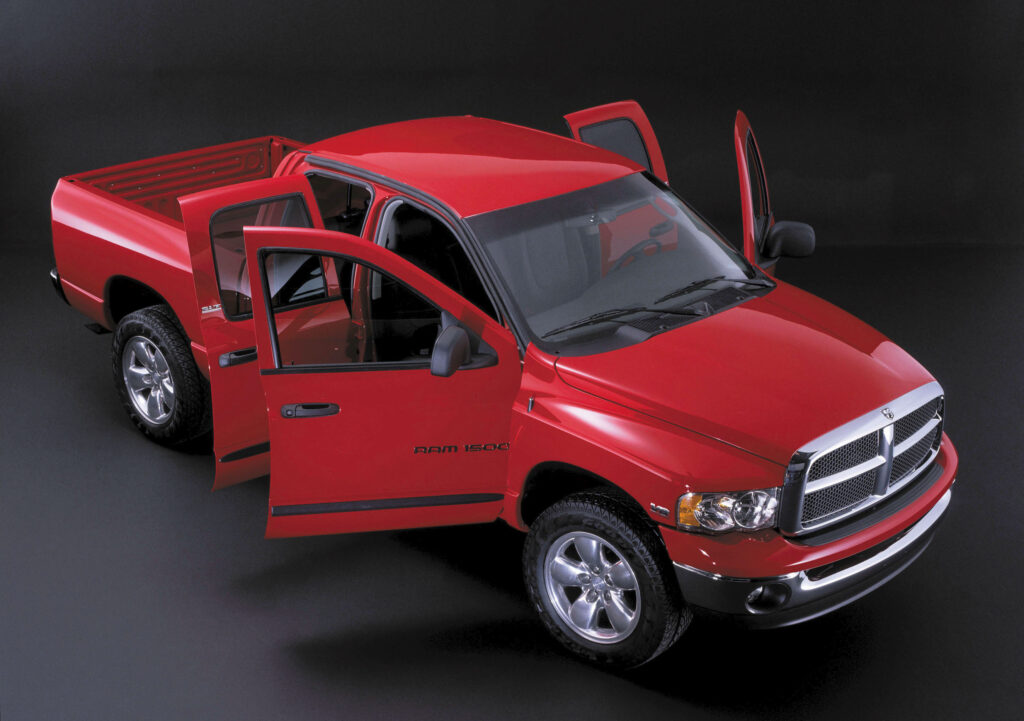
When Dodge introduced an all-new RAM truck in 2002, it had to be significantly better than its predecessor. Dodge managed this by introducing a model with a new frame, improved suspension, fresh styling and new engines. The new RAM had massive fenders and a large chrome grille, but
a more modern aesthetic. The new frame brought increased payload and towing capacity, as well as more interior space and comfort. The engine lineup was expanded to include the legendary 5.7-liter Hemi V8. From 2004 to 2006, Dodge also offered the RAM as an SRT-10 with a massive 8.0-liter V10 borrowed from the sporty Viper! Numerous trim levels and further options made the RAM model suitable not only for work purposes, but also for lifestyle buyers and people who wanted a luxury truck. As a result, the third generation enjoyed consistently strong sales.
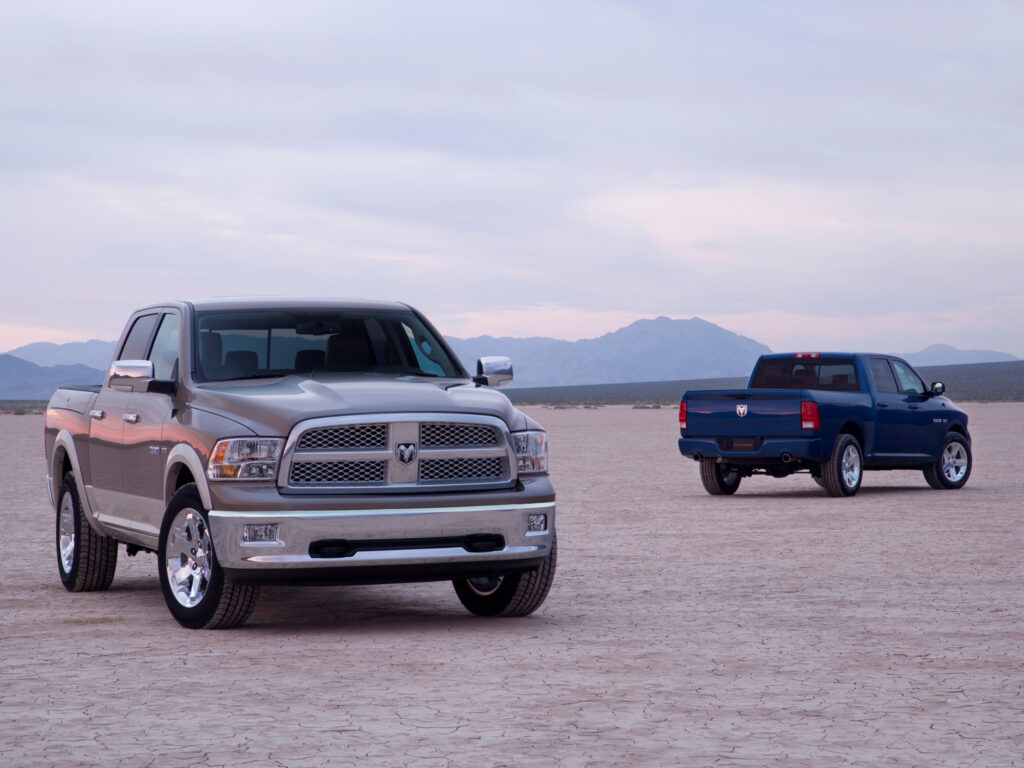
The 4th generation Dodge RAM was introduced in 2009 with further improvements. The design resembled a typical RAM with muscular front fenders and a large grille, but the engine list was revised to include new Diesel and gasoline engines and new transmissions. Plus, the model lineup was expanded to include the Longhorn, a luxury pickup with a unique interior. The new four-door cab and Rambox storage system made RAMs increasingly interesting to customers who weren’t necessarily looking for a work vehicle, and they were often purchased as SUV replacements by customers.
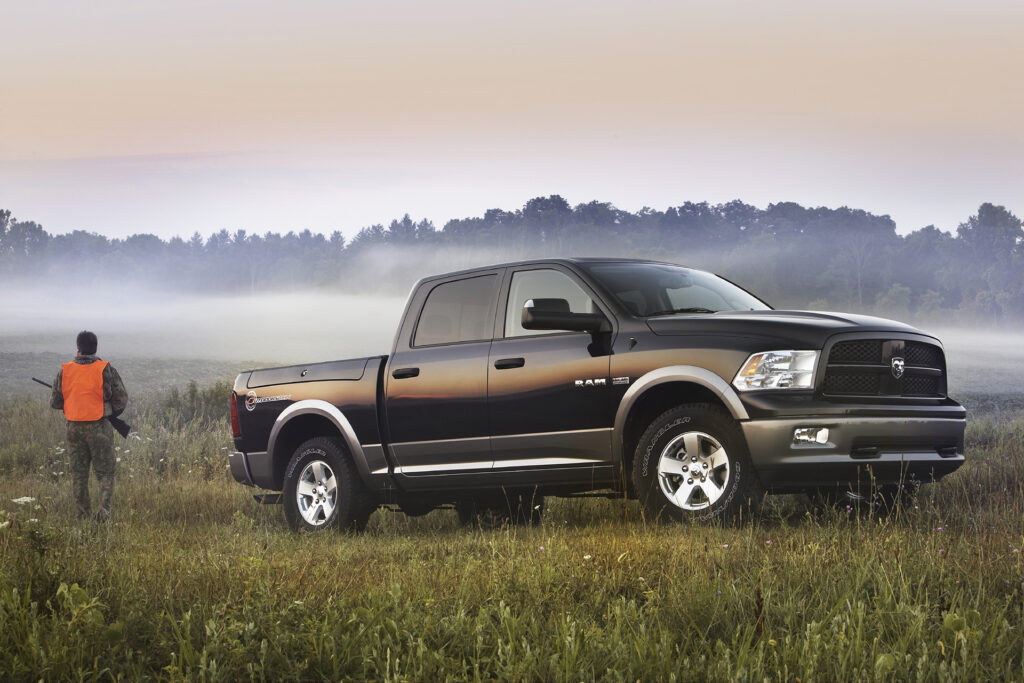
In 2010, following the economic recession of 2008, Chrysler separated RAM Trucks from the rest of the Dodge model lineup and established RAM as a stand-alone sub-brand. Despite financial struggles, the Dodge RAM name was still very strong and customers had remained loyal to their beloved brands. By separating the Dodge and RAM brands, the brand was able to grow on its own, which helped save Chrysler post-recession. As a result of the split, RAM now offered several small- and mid-size models like chassis cab trucks and vans, in addition to pickups in numerous versions and configurations.
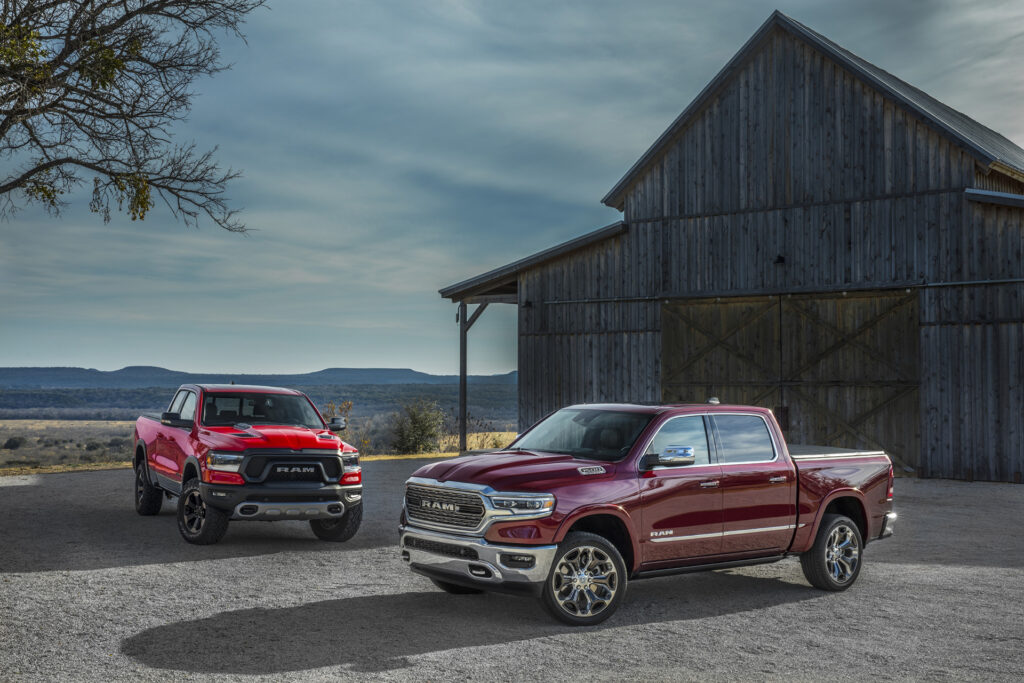
In 2018, RAM unveiled the RAM DT. The new fifth-generation RAM 1500 is offered exclusively as a Quad and Crew Cab model. The new interior is one of the most modern, boasting a massive 12″ infotainment touchscreen display, wide center console and gigantic rear footwell. In 2021, the Ram’s offroad prowess, usually embodied by the Rebel trim, was taken to a new level with the TRX model – due in part to its 702-horsepower, 6.2-liter eight-cylinder engine. In 2021, the RAM hood figure returned as a hood figure on a special model called Traveller.
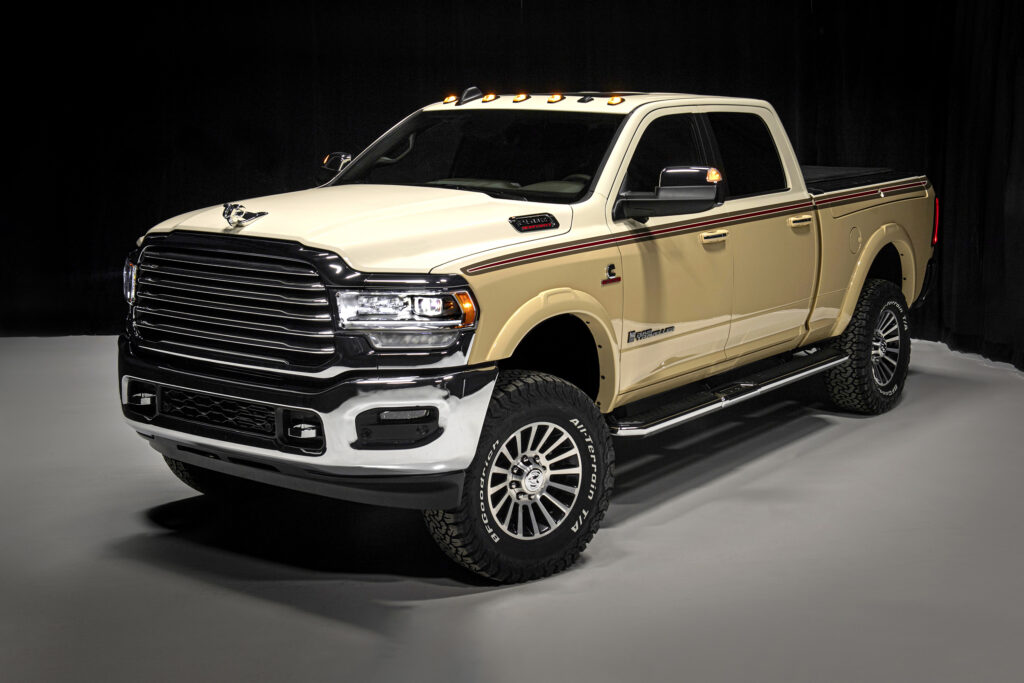
Currently, RAM offers a style for every taste in the 1500 series – from the simple Tradesman to the Big Horn, Laramie, Rebel and TRX to the Limitedl. Over the years, the former transporter and farm truck has increasingly become a lifestyle and sport pickup for everyone – with distinct models and customizable parts, including top-quality Yakima accessories, RAM is your perfect partner for any kind of adventure. Explore our new 2023 RAM model lineup to find the best RAM for your needs.
